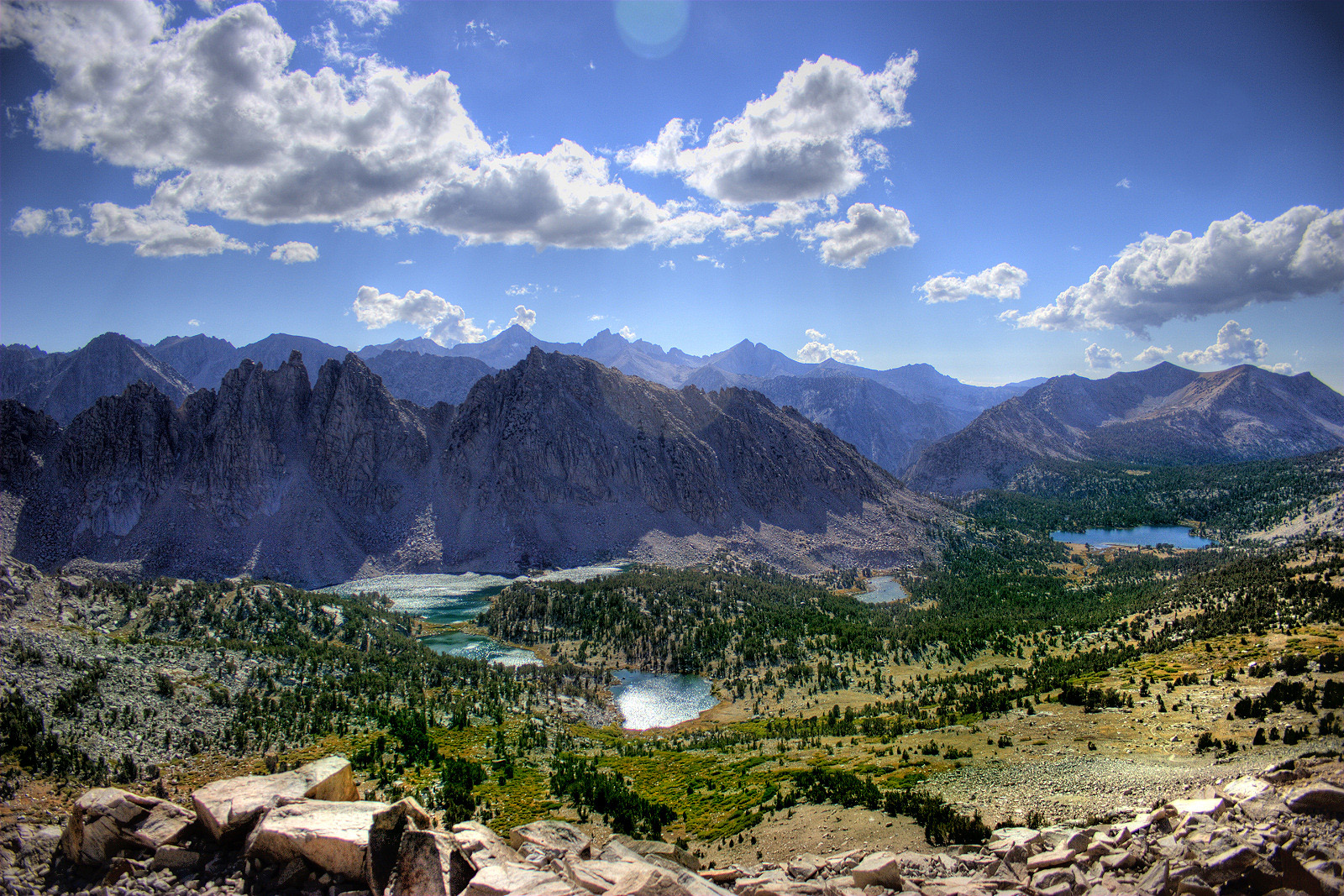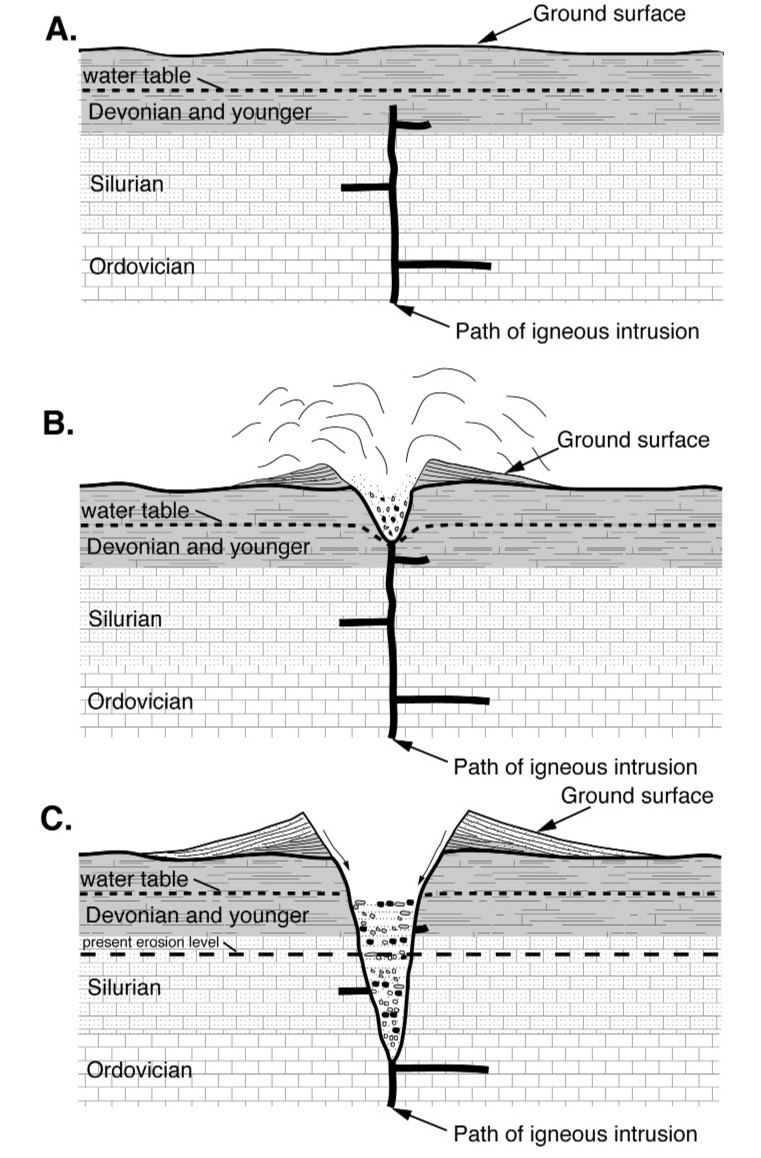|
Batholith
A batholith () is a large mass of intrusive rock, intrusive igneous rock (also called plutonic rock), larger than in area, that forms from cooled magma deep in the Earth's crust. Batholiths are almost always made mostly of felsic or intermediate composition, intermediate rock types, such as granite, quartz monzonite, or diorite (see also ''granite dome''). Formation Although they may appear uniform, batholiths are in fact structures with complex histories and compositions. They are composed of multiple masses, or ''plutons'', bodies of igneous rock of irregular dimensions (typically at least several kilometers) that can be distinguished from adjacent igneous rock by some combination of criteria including age, composition, texture, or mappable structures. Individual plutons are solidified from magma that traveled toward the surface from a zone of partial melting near the base of the Earth's crust. Traditionally, these plutons have been considered to form by ascent of relative ... [...More Info...] [...Related Items...] OR: [Wikipedia] [Google] [Baidu] |
Sierra Nevada Batholith
The Sierra Nevada Batholith is a large batholith that is approximately 400 miles long and 60-80 miles wide which forms the core of the Sierra Nevada mountain range in California, exposed at the surface as granite. The batholith is composed of many individual masses of rock called '' plutons'', which formed deep underground during separate episodes of magma intrusion, millions of years before the Sierra itself first began to rise. The extremely hot, relatively buoyant plutons, also called ''plutonic diapirs'', intruded through denser, native country rock and sediments, never reaching the surface. At the same time, some magma managed to reach the surface as volcanic lava flows, but most of it cooled and hardened below the surface and remained buried for millions of years. The batholith – the combined mass of subsurface plutons – became exposed as tectonic forces initiated the formation of the Basin and Range geologic province, including the Sierra Nevada. As the mounta ... [...More Info...] [...Related Items...] OR: [Wikipedia] [Google] [Baidu] |
Granite
Granite ( ) is a coarse-grained (phanerite, phaneritic) intrusive rock, intrusive igneous rock composed mostly of quartz, alkali feldspar, and plagioclase. It forms from magma with a high content of silica and alkali metal oxides that slowly cools and solidifies underground. It is common in the continental crust of Earth, where it is found in igneous intrusions. These range in size from dike (geology), dikes only a few centimeters across to batholiths exposed over hundreds of square kilometers. Granite is typical of a larger family of ''granitic rocks'', or ''granitoids'', that are composed mostly of coarse-grained quartz and feldspars in varying proportions. These rocks are classified by the relative percentages of quartz, alkali feldspar, and plagioclase (the QAPF diagram, QAPF classification), with true granite representing granitic rocks rich in quartz and alkali feldspar. Most granitic rocks also contain mica or amphibole minerals, though a few (known as leucogranites) conta ... [...More Info...] [...Related Items...] OR: [Wikipedia] [Google] [Baidu] |
Intrusive Rock
Intrusive rock is formed when magma penetrates existing rock, crystallizes, and solidifies underground to form ''Igneous intrusion, intrusions'', such as batholiths, dike (geology), dikes, Sill (geology), sills, laccoliths, and volcanic necks.Intrusive RocksIntrusive rocks accessdate: March 27, 2017.Igneous intrusive rocks, accessdate: March 27, 2017.Britannica.comintrusive rock , geology , Britannica.com accessdate: March 27, 2017. Intrusion is one of the two ways igneous rock can form. The other is extrusive rock, extrusion, such as a Types of volcanic eruptions, volcanic eruption or similar event. An intrusion is any body of intrusive igneous rock, formed from magma that cools and solidifies within the crust of the planet. In contrast, an ''extrusion'' consists of extrusive rock, formed above the surface of the crust. Some geologists use the term plutonic rock synonymously with intrusive rock, but other geologists subdivide intrusive rock, by crystal size, into coarse-grai ... [...More Info...] [...Related Items...] OR: [Wikipedia] [Google] [Baidu] |
Sierra Nevada
The Sierra Nevada ( ) is a mountain range in the Western United States, between the Central Valley of California and the Great Basin. The vast majority of the range lies in the state of California, although the Carson Range spur lies primarily in Nevada. The Sierra Nevada is part of the American Cordillera, an almost continuous chain of mountain ranges that forms the western "backbone" of the Americas. The Sierra runs north-south, and its width ranges from to across east–west. Notable features include the General Sherman Tree, the largest tree in the world by volume; Lake Tahoe, the largest alpine lake in North America; Mount Whitney at , the highest point in the contiguous United States; and Yosemite Valley sculpted by glaciers from one-hundred-million-year-old granite, containing high waterfalls. The Sierra is home to three national parks, twenty-six wilderness areas, ten national forests, and two national monuments. These areas include Yosemite, Sequoia, and Ki ... [...More Info...] [...Related Items...] OR: [Wikipedia] [Google] [Baidu] |
Igneous Rock
Igneous rock ( ), or magmatic rock, is one of the three main rock types, the others being sedimentary and metamorphic. Igneous rocks are formed through the cooling and solidification of magma or lava. The magma can be derived from partial melts of existing rocks in either a planet's mantle or crust. Typically, the melting is caused by one or more of three processes: an increase in temperature, a decrease in pressure, or a change in composition. Solidification into rock occurs either below the surface as intrusive rocks or on the surface as extrusive rocks. Igneous rock may form with crystallization to form granular, crystalline rocks, or without crystallization to form natural glasses. Igneous rocks occur in a wide range of geological settings: shields, platforms, orogens, basins, large igneous provinces, extended crust and oceanic crust. Geological significance Igneous and metamorphic rocks make up 90–95% of the top of the Earth's crust by volume. Igneous rock ... [...More Info...] [...Related Items...] OR: [Wikipedia] [Google] [Baidu] |
Stock (geology)
In geology, a stock is an igneous Intrusion (geology), intrusion that has a surface exposure of less than ,Whittow, John (1984). ''Dictionary of Physical Geography''. London: Penguin, 1984, p. 513. . differing from batholiths only in being smaller. A stock has a Intrusive rock#Related terms, discordant relationship with the rocks that it intrudes. Many stocks are cupola (geology), cupolas of hidden batholiths. Some circular or elliptical stocks may be volcanic plugs, which fill the vents of now extinct volcanoes. A boss is a small stock. Examples * the Alta and Clayton Peak stocks (composed of granodiorite), near Park City, Utah * the Hellroaring Creek and Salal Creek Pluton, Salal Creek stocks (of granite-granodiorite and quartz monzonite, respectively) in British Columbia, Canada * the Céret stock (of gabbro and diorite) in Pyrénées-Orientales, France * the Parashi stock (of tonalite) in La Guajira Department, Colombia * stocks of syenite in the Caldera de Tejeda on Gran Canar ... [...More Info...] [...Related Items...] OR: [Wikipedia] [Google] [Baidu] |
Pluton
In geology, an igneous intrusion (or intrusive body or simply intrusion) is a body of intrusive igneous rock that forms by crystallization of magma slowly cooling below the surface of the Earth. Intrusions have a wide variety of forms and compositions, illustrated by examples like the Palisades Sill of New York and New Jersey; the Henry Mountains of Utah; the Bushveld Igneous Complex of South Africa; Shiprock in New Mexico; the Ardnamurchan intrusion in Scotland; and the Sierra Nevada Batholith of California. Because the solid country rock into which magma intrudes is an excellent insulator, cooling of the magma is extremely slow, and intrusive igneous rock is coarse-grained ( phaneritic). Intrusive igneous rocks are classified separately from extrusive igneous rocks, generally on the basis of their mineral content. The relative amounts of quartz, alkali feldspar, plagioclase, and feldspathoid is particularly important in classifying intrusive igneous rocks. Intru ... [...More Info...] [...Related Items...] OR: [Wikipedia] [Google] [Baidu] |
Volcano
A volcano is commonly defined as a vent or fissure in the crust of a planetary-mass object, such as Earth, that allows hot lava, volcanic ash, and gases to escape from a magma chamber below the surface. On Earth, volcanoes are most often found where tectonic plates are diverging or converging, and because most of Earth's plate boundaries are underwater, most volcanoes are found underwater. For example, a mid-ocean ridge, such as the Mid-Atlantic Ridge, has volcanoes caused by divergent tectonic plates whereas the Pacific Ring of Fire has volcanoes caused by convergent tectonic plates. Volcanoes resulting from divergent tectonic activity are usually non-explosive whereas those resulting from convergent tectonic activity cause violent eruptions."Mid-ocean ridge tectonics, volcanism and geomorphology." Geology 26, no. 455 (2001): 458. https://macdonald.faculty.geol.ucsb.edu/papers/Macdonald%20Mid-Ocean%20Ridge%20Tectonics.pdf Volcanoes can also form where there is str ... [...More Info...] [...Related Items...] OR: [Wikipedia] [Google] [Baidu] |
Country Rock (geology)
In geology, country rock is the rock native to an area, in contrast to any intrusion of viscous geologic material, commonly magma, or perhaps rock salt (in salt domes) or unconsolidated sediments. Magma is typically less dense than the rock it intrudes, widening and filling existing cracks, sometimes melting the already-existing country rock. The term "country rock" is similar to, and in many cases interchangeable with, the terms basement and wall rocks. Country rock can denote the widespread lithology of a region in relation to the rock which is being discussed or observed. Geologic settings Settings in geology when the term ''country rock'' is used include: Igneous intrusions When describing a pluton or dike, the igneous rock can be described as intruding the surrounding ''country rock'', the rock into which the pluton has intruded.Newfoundland and LabradorGlossary of Geological Terms Accessed June 2018. When country rock is intruded by a dike, perpendicular ... [...More Info...] [...Related Items...] OR: [Wikipedia] [Google] [Baidu] |
Partial Melting
Partial melting is the phenomenon that occurs when a rock is subjected to temperatures high enough to cause certain minerals to melt, but not all of them. Partial melting is an important part of the formation of all igneous rocks and some metamorphic rocks (e.g., migmatites), as evidenced by a multitude of geochemical, geophysical and petrological studies. The parameters that influence partial melting include the composition of the source rock, the pressure and temperature of the environment, and the availability of water or other fluids. As for the mechanisms that govern partial melting, the main are decompression melting and flux melting. Decompression melting occurs when rocks are brought from higher to lower pressure zones in the Earth's crust, lowering the melting point of its mineral components, thus generating a partial melt. Flux melting, on the other hand, occurs when water and other volatiles get in contact with hot rock, reducing the melting point of minerals, leading t ... [...More Info...] [...Related Items...] OR: [Wikipedia] [Google] [Baidu] |
Yosemite 20 Bg 090404
Yosemite National Park ( ) is a List of national parks of the United States, national park of the United States in California. It is bordered on the southeast by Sierra National Forest and on the northwest by Stanislaus National Forest. The park is managed by the National Park Service and covers in four County, countiescentered in Tuolumne County, California, Tuolumne and Mariposa County, California, Mariposa, extending north and east to Mono County, California, Mono and south to Madera County, California, Madera. Designated a World Heritage Site in 1984, Yosemite is internationally recognized for its granite cliffs, waterfalls, clear streams, groves of Sequoiadendron giganteum, giant sequoia, lakes, mountains, meadows, glaciers, and Biodiversity, biological diversity. Almost 95 percent of the park is designated National Wilderness Preservation System, wilderness. Yosemite is one of the largest and least fragmented habitat blocks in the Sierra Nevada. Its geology of the Yosem ... [...More Info...] [...Related Items...] OR: [Wikipedia] [Google] [Baidu] |







